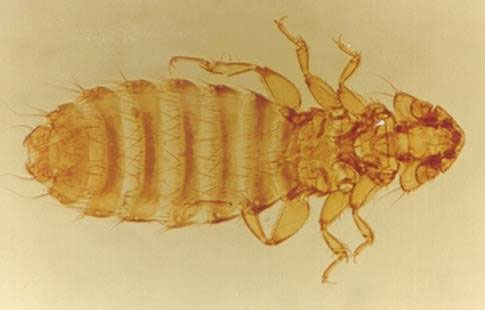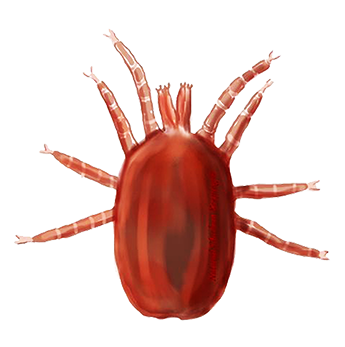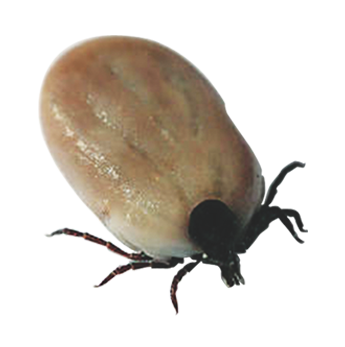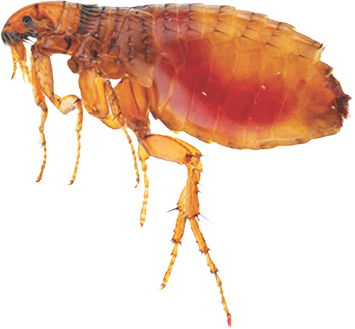Total Control of External Parasites
External Parasites are creatures that live on or around chickens. The shift from small farm flocks to larger commercial poultry operations has greatly increased these pest concerns. External parasites are a direct threat to economically valuable birds because they can slow the growth rate, lower the vitality, damage the plumage, and reduce the egg production of poultry. Heavy infestations have been known to reduce egg production by as much as 30 percent. In addition, heavy infestations can make birds susceptible to other parasites and diseases that can cause death.
Lice and mites are the most common external parasites of poultry, though not a parasite of poultry, the house fly is a major concern to poultry producers, especially in caged-layer/breeder operations. The other major pests include bed bugs and fowl ticks, high infestation can cause serious damage to poultry operations. Stick tight fleas, scaly-leg mites, mosquitoes and beetles are less common pests in modern commercial farms.

Poultry Lice
Lice are small (mostly between 1 and 6 mm long), wingless, straw- colored insects with a somewhat flattened appearance and in most cases an elongated abdomen. The two most common louse species affecting poultry are the chicken body louse (Menacanthus stramineus) and the shaft louse (Menapon gallinae). All poultry lice have chewing mouthparts and feed on dry skin scales, scab tissue, and feather parts. They also feed on blood when the host bird’s skin or feather quills are punctured. Lice are commonly found on skin as well as on the feathers and can move from one bird to another when birds are kept in close contact. The louse’s eggs (nits) usually are attached to the feathers.
Adult chicken body lice are most prevalent around the sparsely feathered vent, breast, and thigh regions. Eggs of the chicken body louse are cemented in clusters to the base of feathers, especially around the vent, while eggs of the shaft louse are cemented individually at the base of the feather shaft or along the feather barb in the breast and thigh regions. Eggs of both species require 4 to 7 days to hatch and then 10 to 15 days to reach adulthood. An adult louse can lay from 50 to 300 eggs in its 3-week lifespan.

Chicken Mites
Mites are wingless, very small (just visible without magnification) and may look like dark, moving specks. Bird mites (avian mites) are parasitic arthropods in the acari (tick/spider) family. The red mite (Dermanyssus gallinae) and the tropical fowl mite (Ornithonyssus bursa) are two main species that infest chickens, turkeys, pigeons, canaries, and various wild birds worldwide. These bloodsucking mites will also bite people. Chicken mites are nocturnal feeders that hide during the day under manure, on roosts, and in cracks and crevices of the chicken house, where they deposit eggs. Populations develop rapidly during the warmer months and more slowly in cold weather.
The bird mite life cycle consists of egg, larva, nymph, and mature adult. They can complete this cycle in about 7 days, depending on the environment.Heavy infestations of either chicken mites or tropical fowl mites decrease reproductive potential in males, egg production in females, and weight gain in young birds; they can also cause anemia and death.

Fowl Ticks
Fowl ticks (Argas persicus), also known as blue bugs, are considered soft ticks. By contrast, the ticks that are normally found on cats and dogs are hard ticks. The ticks that affect birds are light reddish brown to deep brown and their skin is wrinkled. Adults are about 1/4 inch in length. Ticks live in the cracks and crevices of a poultry house.
Females lay 50 to 100 eggs after every blood meal. Eggs are laid in the cracks and crevices in the poultry house. After the eggs hatch, the larvae seek out a host where they attach themselves and feed for four to seven days. The larvae then fall off the host and molt to the nymph stage. Nymphs and adults feed only at night and for short periods of time (15 to 30 minutes). Red spots can be observed on the bird where the tick has fed. After several nymphal molts, the adult tick emerges. The time from egg to adult is approximately 30 days.

Sticktight Fleas
Sticktight fleas (Echidnophaga gallinacea) attach themselves to the skin and wattles on the head of birds. Unlike northern fowl mites or scaly-leg mites, these fleas can thrive on other animals, including dogs, cats, horses, and humans.
Female sticktight fleas forcefully eject eggs into the surrounding environment. Larvae develop in the soil around poultry houses. It typically takes four weeks for an egg to develop into an adult. Adults are free-living until it is time to breed, at which time female fleas attach to the skin around the face and wattles and lay their eggs to continue the cycle.
Prevention and Control
External parasites are mostly spread by bird to bird contact. Wild birds and rodents may also be responsible for parasites entering the flock. Once detected, it is highly likely that all birds and housing are infected.Prevention and early detection are the best ways to deal with mites and lice. Regularly check birds for signs of mite and lice and check common hiding places such as under perches and in cracks. Once mites and lice are in your flock, they can be difficult to control.
LiceOUT

LiceOUT is a research based novel product developed by Nutricon exclusively to control external parasites of poultry birds.
Composition : LiceOUT contains external parasites of poultry suppressing Soil bacteria, enzymes and plant oils with organic carriers.
For lice – Mix thoroughly one litre of LiceOUT with 200 litres of water and spray the solution on the birds/shed where there is infestation of lice. (Dose: 5 ml of LiceOUT per litre of water). One litre of LiceOUT is sufficient for 1000 to 1500 breeders or 3000 to 5000 layers.
For Mites, Fleas and Mosquitoes – Mix thoroughly one litre of LiceOUT with 200 litres of water and spray the solution on the birds/shed where there is infestation of Mites/Fleas/Mosquitoes. (Dose: 5 ml of LiceOUT per Litre of water). The quantity requirement depends on the severity of infestation.
For Ticks and Beetles – Mix thoroughly one litre of LiceOUT with 100 litres of water and spray the solution on the birds/shed where there is infestation of ticks/beetles. (Dose: 10 ml of LiceOUT per Litre of water). The quantity requirement depends on the severity of infestation.
Hence mites and ticks are found in cracks and crevices, so thoroughly ensure that those areas are covered while spraying.